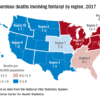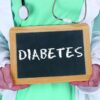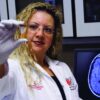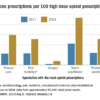![1]()
News
Fentanyl-related deaths show strong regional pattern
November 12, 2019
Overdose death rates for cocaine, heroin, and fentanyl are high in the East and low in the West.
![1]()
News
New score predicts benefits of prolonged cardiac monitoring for TIA, stroke patients
November 5, 2019
How can we determine which patients would benefit from prolonged cardiac monitoring after a neurologic event?
![1]()
News
Certain diabetes drugs may thwart dementia
October 21, 2019
COPENHAGEN – Intriguing findings from a Danish national registry study.
![1]()
News
Minimize blood pressure peaks, variability after stroke reperfusion
October 15, 2019
ST. LOUIS – Controlling blood pressure variability improves outcomes after stroke.
![1]()
News
MRI saves money, better than CT in acute stroke
October 14, 2019
ST. LOUIS – The annual savings from skipping CT in favor of MRI for patients with suspected stroke would offset the cost of round-the-clock MRI staffing.
![1]()
News
Blood test may reveal brain injury
August 27, 2019
Levels of glial fibrillary acidic protein (GFAP) and ubiquitin C-terminal hydrolase L1 (UCH-L1) are lowest in patients with nonconcussive body trauma, higher in patients with nonconcussive head trauma, and highest in patients with concussion.
![1]()
News
CDC finds that too little naloxone is dispensed
August 6, 2019
Despite increases in the number of naloxone prescriptions dispensed, many patients at risk for overdose are not offered the potentially life-saving treatment, according to an analysis of national retail pharmacy data.
![1]()
News
Amitriptyline for chronic low back pain
July 23, 2019
Is a low-dose tricyclic antidepressant effective in the treatment of chronic low back pain?
![1]()
News
Statins crush early seizure risk poststroke
July 18, 2019
BANGKOK – Statin initiation upon hospitalization for acute ischemic stroke was linked to a major antiseizure benefit in a Japanese study.
News
Systolic, diastolic BP each tied to adverse CV outcomes
July 17, 2019
Diastolic hypertension can’t be ignored, investigator says, though systolic ultimately has a larger impact.








